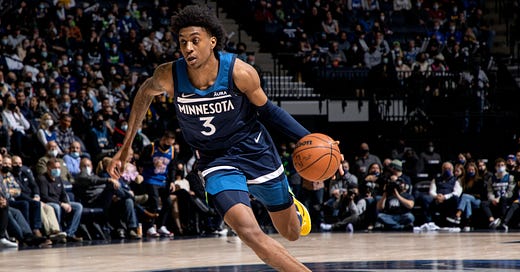Deep Dive: The Wolves Need To Prioritize Jaden McDaniels
When Minnesota's rangy forward begins his third season, it's time to start ramping up his development.
The wounds inflicted during Minnesota’s short-lived and highly intriguing playoff run are still fresh, but the savage nature of the Association leaves little time to lick them. The Wolves, like every other team that has exited the playoff dogfight, are already peering into the crystal ball and trying to configure how they ca…
Keep reading with a 7-day free trial
Subscribe to Howls and Growls to keep reading this post and get 7 days of free access to the full post archives.




